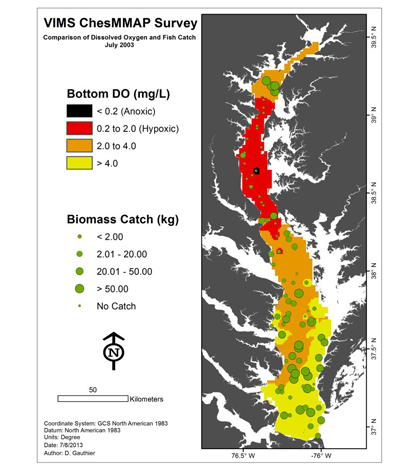VIMS study shows fish flee Chesapeake Bay hypoxia

A Virginia Institute of Marine Sciences study found that near-bottom fish in the Chesapeake Bay tend to move out of areas nearing hypoxia, according to a VIMS release.
The study, which has spanned 10 years, found that biomass decreased in the middle of the Chesapeake Bay during mid-summer. That part of the bay typically experiences hypoxia due to algal blooms fed from nutrient runoff.
A total of 48 sampling trips from 2002 through 2011 have shown that, when dissolved oxygen concentrations dip below 4 milligrams per liter, many near bottom fish leave the area.
Analysis was limited to demersal, near bottom, fish and the same trends were not confirmed for fish higher in the water column. The algae, which produce hypoxic conditions, can benefit fish higher in the water column by boosting the food chain, according to the release.





0 comments